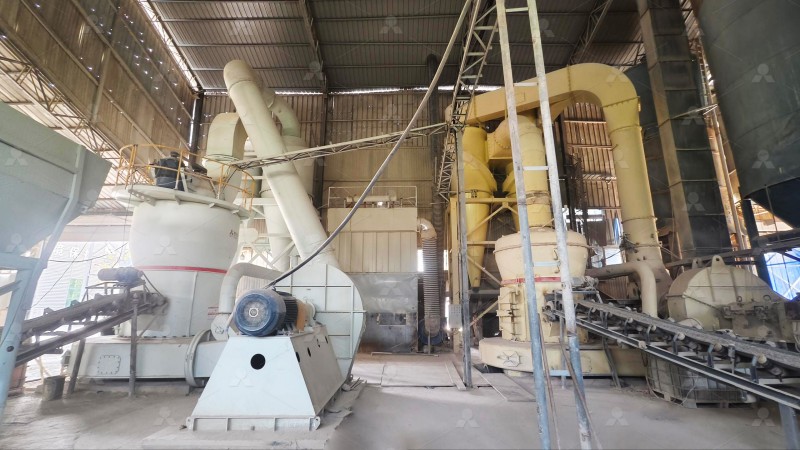Impact Crushers vs Hammer Mills vs Ball Mills: Which is Best for Your Material?
Impact Crushers vs Hammer Mills vs Ball Mills: Which is Best for Your Material?
Selecting the right size reduction equipment is crucial for optimizing your operation’s efficiency, product quality, and bottom line. The choice between impact crushers, hammer mills, and ball mills isn’t merely about preference—it’s about matching the machine’s mechanism to your material’s characteristics and your final product specifications. Let’s break down the core differences to guide your decision.
Understanding the Core Mechanisms
Each of these machines operates on a distinct physical principle. Impact Crushers utilize high-speed impact forces. Material is fed into a chamber containing a high-speed rotor with blow bars that throw the material against stationary aprons or breaker plates. This action is ideal for coarse to medium reduction of moderately abrasive materials like limestone and recycled concrete.
Hammer Mills are a type of impact crusher but are often categorized separately due to their configuration. They use pivoting or fixed hammers mounted on a rotating shaft to shatter material upon impact with the chamber walls or upon contact with a sizing screen. They excel in a wider range of applications, from medium-fine grinding to shredding and pulverizing, handling everything from aggregates to biomass.
Ball Mills represent a different approach entirely: attrition and impact. They consist of a rotating cylinder (shell) partially filled with grinding media, typically steel balls. As the shell rotates, the balls are lifted and then cascade down, crushing and grinding the material through a combination of impact and abrasion. This method is the go-to for achieving very fine powders and is a workhorse in mineral processing.

Key Selection Criteria: A Practical Guide
Your material’s properties and your production goals should dictate your choice.
- Feed Size: Impact crushers and large hammer mills can handle sizable lumps. Ball mills typically require a pre-crushed feed.
- Desired Product Fineness: Need a coarse aggregate? An impact crusher is perfect. Looking for a medium-fine powder? A hammer mill with the right screen size will do. But for ultra-fine powders reaching 2500 meshes, ball mills or, even better, advanced grinding mills are necessary.
- Material Hardness and Abrasiveness: Highly abrasive materials can rapidly wear down the hammers and liners in impact-based systems. Ball mills, while also subject to wear, can be more economical for continuous grinding of such materials due to the simple nature of the grinding media.
- Moisture Content: Hammer mills and impact crushers can handle somewhat moist materials, but sticky materials can cause clogging. Ball mills can be configured for dry or wet grinding, offering versatility.
Beyond the Basics: The Modern Solution for Ultra-Fine Grinding
While ball mills have been the traditional solution for fine grinding, they come with drawbacks: high energy consumption, significant wear, and potential for contamination. For operations demanding superior efficiency and ultra-fine products, modern grinding technology has evolved.
For customers who need to make ultra-fine powder with higher yielding and lower energy consumption, our MW Ultrafine Grinding Mill presents a revolutionary alternative. It is engineered to produce powders adjustable between 325-2500 meshes with a remarkable screening rate of d97≤5μm in a single pass. A key design advantage is the absence of rolling bearings and screws in the grinding chamber, eliminating concerns about bearing damage or machine failure from loose components. Furthermore, its efficient pulse dust collector and muffler ensure the entire production process is eco-friendly, meeting stringent national environmental protection standards.

Another standout in our lineup for precision and stability is the LUM Ultrafine Vertical Grinding Mill. Integrating the latest grinding roller and powder separating technology, the LUM mill is designed for higher yielding rates and better product quality. Its unique double position-limiting technology prevents destructive impacts from machine vibration, guaranteeing stable operation, while the reversible structure allows for easier and faster maintenance, significantly reducing downtime.
Making the Final Decision
There is no one-size-fits-all answer. An impact crusher is your robust choice for primary and secondary crushing of non-abrasive rocks. A hammer mill offers versatility for various materials and a controlled top size via its screen. A traditional ball mill is a proven, albeit less efficient, method for fine grinding.
However, for the most demanding applications requiring ultra-fine powders, superior energy efficiency, and minimal operational headaches, advanced grinding mills like the MW and LUM series are the clear forward-thinking choice. They are designed not just to grind, but to optimize your entire process from input to output.

Frequently Asked Questions (FAQ)
Q1: Can a hammer mill produce the same fineness as a ball mill?
Generally, no. While hammer mills can achieve medium-fine powders, they are typically limited by screen size and are less efficient at producing the consistent, ultra-fine powders (e.g., below 400 mesh) that ball mills and advanced ultrafine grinding mills are designed for.
Q2: Which machine is more energy-efficient?
This depends on the target fineness. For coarse crushing, impact crushers are efficient. For fine and ultra-fine grinding, modern mills like our MW Ultrafine Grinding Mill are significantly more efficient, consuming up to 30-50% less energy than traditional ball mills and jet mills.
Q3: How does moisture affect the choice of mill?
High moisture can lead to clogging in impact crushers and hammer mills. If your material has high moisture, a system with integrated drying, like our LM Vertical Grinding Mill, may be required. Ball mills can be operated as wet mills to handle slurry.
Q4: What is the single most important factor in selecting a mill?
The most critical factor is the characteristic of your feed material and your required product specification. Always start with a thorough analysis of your material’s hardness, abrasiveness, moisture content, and input size, paired with your desired output fineness and capacity.
